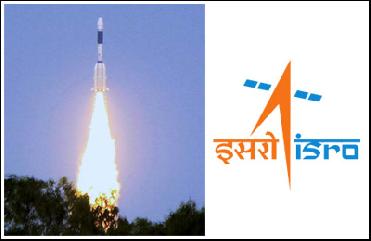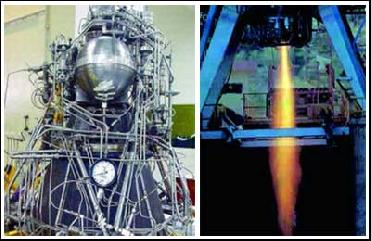
ISRO's GSLV-D3 takes off from Satish Dhawan Space Centre in Shriharikota on Thursday. ISRO said the mission's objectives were not met fully.
SRIHARIKOTA (PTI): India's ambitious attempt to flight-test its indigenous cryogenic engine today received a setback as the homegrown rocket GSLV-D3 deviated from path within seconds of lift-off.
As the Geosynchronous Satellite Launch Vehicle (GSLV)-D3 soared into the sky from the Satish Dhawan spaceport here, it veered off from its flightpath and lost contact with the mission control.
"We stopped receiving data from GSLV-D3 minutes after its lift off," ISRO officials said.
Indian Space Research Organisation (ISRO) Chairman K Radhakrishnan said GSLV-D3 mission objectives were not met fully.
"The mission objectives are not met fully. There are indications that the cryogenic engine ignited but the vehicle was tumbling and controllability lost," ISRO Chairman K Radhakrishnan said.
The GSLV-D3 was to put in orbit the GSAT-4 communications satellite. GSLV-D3, carrying India's communication satellite, GSAT- 4, blasted off at 4:27 PM (IST) from Satish Dhawan Space Centre in Sriharikota.
"We saw the vehicle tumbling uncontrollably and it developed deviation. Two vernier engines would not have ignited," Radhakrishnan, for whom it was the first mission after taking over as ISRO chief, told mission scientists as gloom descended on the Satish Dhawan Space Centre.
He said details of the flight data would be analysed to find out what went wrong.
Radhakrishnan also said that the performance of the vehicle was normal upto the "burn out" of the second stage.
In the crucial cryogenic stage, indications were that the onboard computer had given signals to burn and the cryogenic engine had ignited. However, "we saw the vehicle tumbling."
"We need to go a long way and do that (launch the mission successfully) within the next year," Radhakrishnan told the scientists while complimenting them for their "18 years of hard work" to develop the complex cryogenic technology.
Underlining ISRO's commitment to carry on with cryogenic stage rocket programme, he said the next flight will be carried out within a year.
"It was an event of 18 years working with complex technology. Upto the level of carrying (the vehicle) is a major accomplishment," he said.
The GSLV flight was to have placed the 2,200 kg advanced communication satellite GSAT-4, into Geo Transfer Orbit.
The GSAT-4 is a state-of-the-art satellite that carries communication and navigation payloads.
ISRO had invested Rs 330 crore for the prestigious mission whose success would have placed India in the elite club of space faring powers US, Russia, China, Japan, and Europe which possess the cryogenic technology.
India began developing the cryogenic engine as its answer to technology denial regime as the US not only refused the technology but also put pressure on Russia to backtrack on its commitment to New Delhi.
Earlier GSLV flights were powered by the ready-to-fly cryogenic engines supplied by Russia.
Cryogenic engines, giving additional thrust, help in launching heavier satellites into geo-synchronous transfer orbits (GTO) at an altitude of 36,000 km over the equator.
The engine uses liquid hydrogen at -265 degree Celsius as fuel and liquid oxygen at -240 degree celsius as oxidiser and cryogenic development is considered complex as involves very low temperatures of the propellants.
The countries which had mastered the "highest level" of propulsion technology had kept it closely guarded.
ISRO’s cryogenic tech and GSLV-D3 launch
 Next Article
Next Article













The Indian Air Force, in its flight trials evaluation report submitted before the Defence Ministry l..
view articleAn insight into the Medium Multi-Role Combat Aircraft competition...
view articleSky enthusiasts can now spot the International Space Station (ISS) commanded by Indian-American astr..
view article